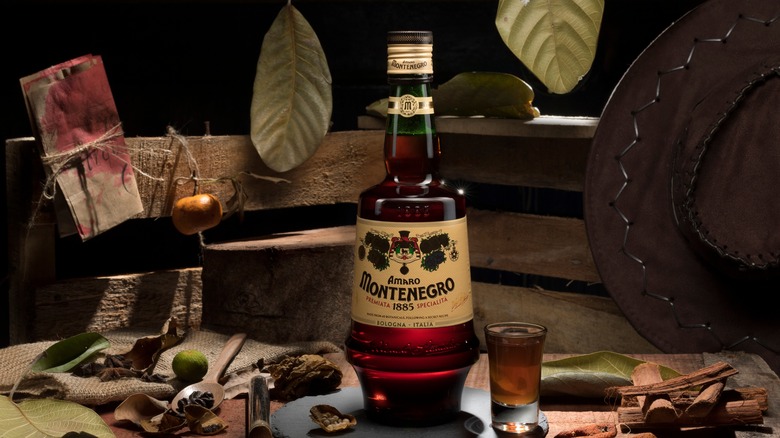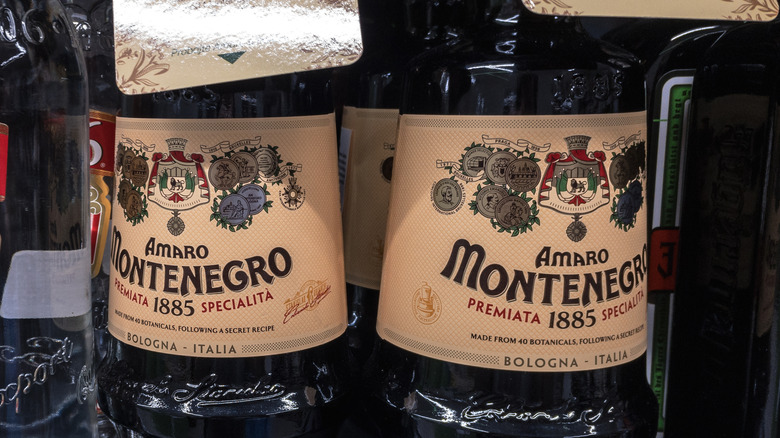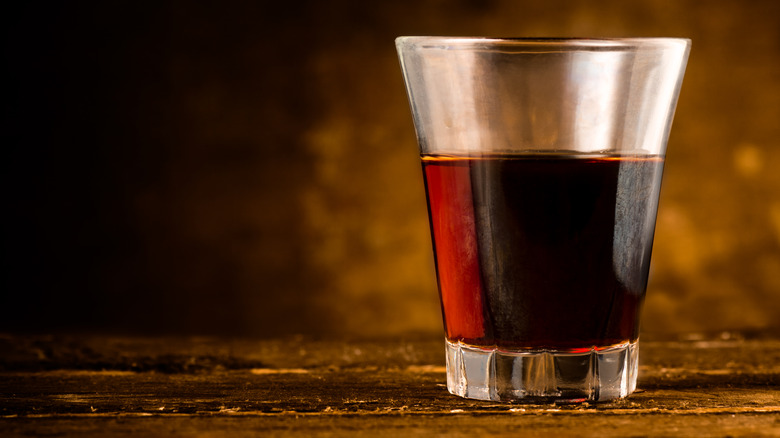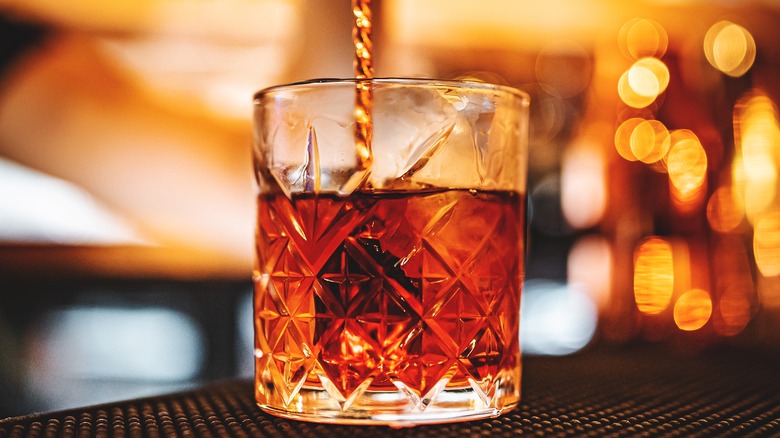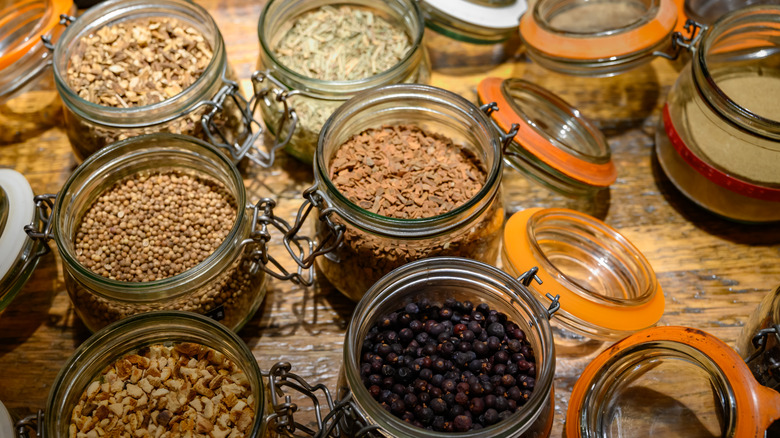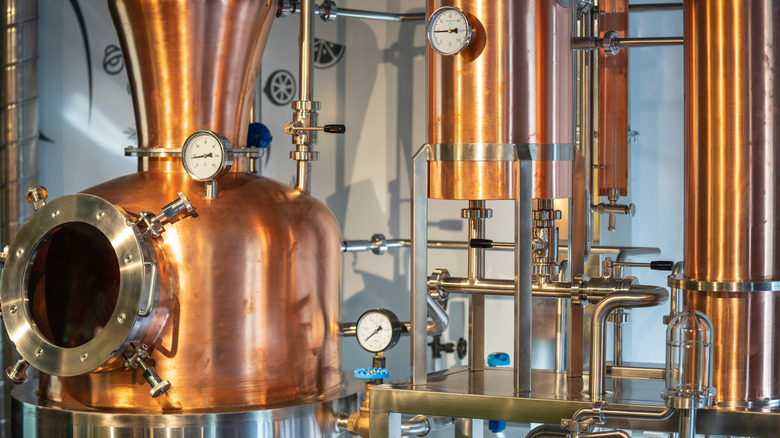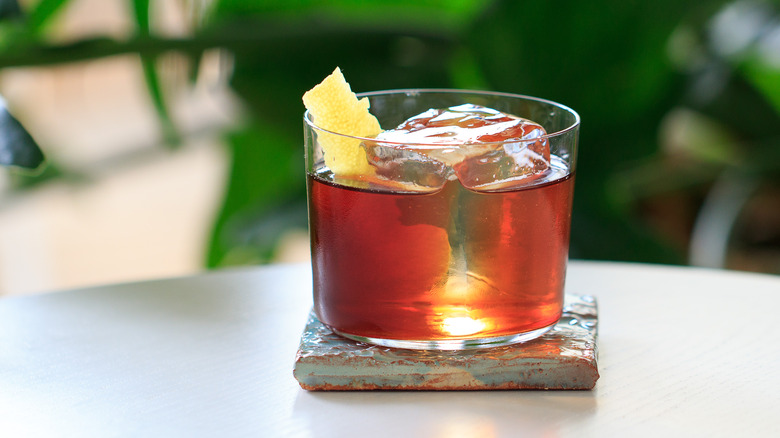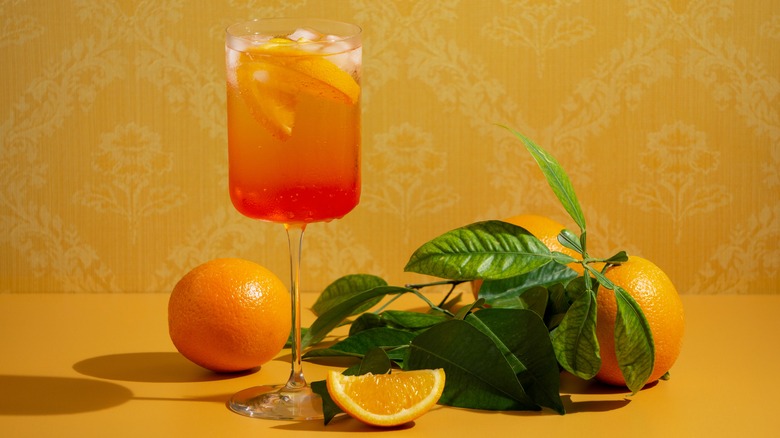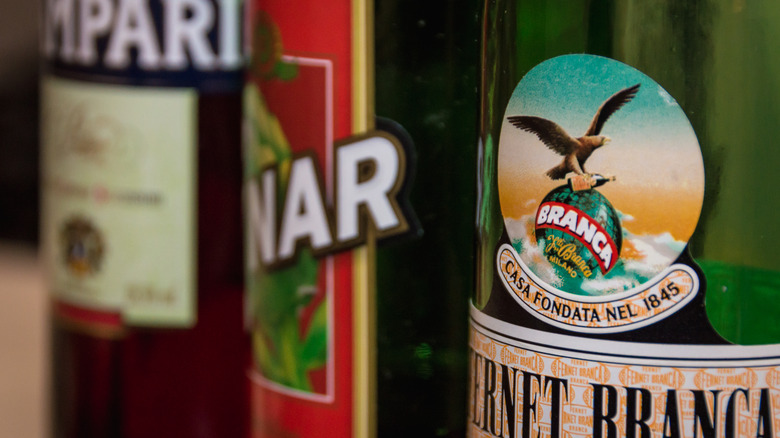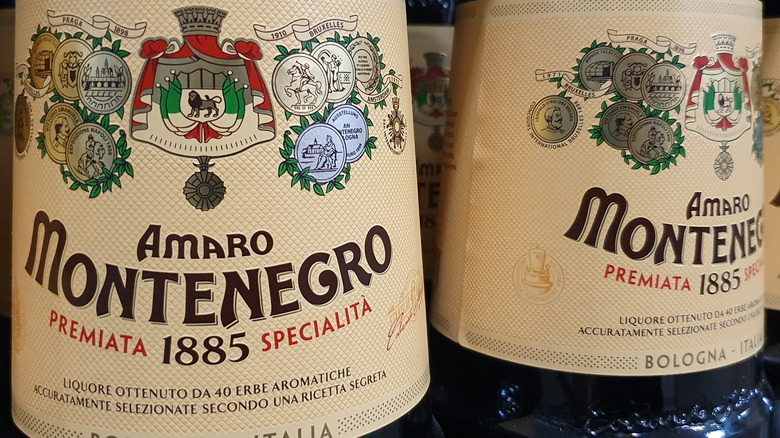Amaro Montenegro: What Is It And How Do You Drink It?
If you're looking to expand the contents of your liquor cabinet, you might be wondering about Amaro Montenegro. This bottle stands out in the world of herbal liqueurs, offering a unique blend of forty botanicals that have been carefully curated since its inception in 1885. Crafted in the heart of Bologna, Italy, this amber elixir is a tasty addition to any collection of spirits. However, it's natural to want to know more before you buy it.
In this exploration of Amaro Montenegro, we'll delve into its origins, the blend of botanicals, and the meticulous process of its production. We'll uncover the historical roots that have embedded this liqueur in Italian culture and explore the sensory journey it provides, from the initial aroma to the bittersweet finish.
Our journey will not only reveal the intricacies of Amaro Montenegro's composition but also highlight the various ways to enjoy its richness. From classic cocktails that honor its heritage to modern mixology creations, the versatility of this liqueur opens up a world of possibilities.
Get ready to discover the essence of Amaro Montenegro, learning more about what it is and how to drink it. We've got all the information you need to decide whether Amaro Montenegro is right for you and how it compares to other amari (that's the plural of amaro).
What is Amaro Montenegro?
The first thing you need to know about Amaro Montenegro is that it belongs to the illustrious family of amari. But what exactly is an amaro? Amaro is the Italian word for "bitter" and an amaro is a drink — more specifically, it's a type of herbal liqueur. Amari originate in Italy, where they're enjoyed after dinner as digestifs. They are revered for their complex flavor profiles that dance between bitter, sweet, and herbal notes. Drinks in this family are crafted by infusing a blend of herbs, spices, botanicals, and often citrus peels into a base spirit.
But what about Amaro Montenegro? As we know, it's a type of amaro — but what's great about amari is that they're all somewhat different. This one is a mid-colored amaro with a strength of 23% alcohol by volume (ABV), which is on the lower end of the spectrum for an amaro. It's fairly balanced between sweetness and bitterness, which means some describe it as a "gateway amaro." It's a good one to get started on if you're new to the world of amari but want something a little different from orange amari, like Aperol and Campari.
History of Amaro Montenegro
Amaro Montenegro traces its roots back to 1885 when it was first created by a man named Stanislao Cobianchi. In the small village of Bologna, Italy, Cobianchi sought to craft a bitter liqueur that not only celebrated the traditional Italian amaro profile but also stood out with its own unique character. Cobianchi made this new amaro with a blend of 40 botanicals. This recipe is still used to this day.
Back in the 1800s, amari were considered health tonics with a range of (since debunked) medicinal benefits. As such, it was originally called Elisir Lungavita, which translates to the elixir of life. However, it was only 11 years later, in 1896, when its name was changed to Amaro Montenegro. The reason for this is a simple one: It was named after Princess Elena of Montenegro, who was part of the Royal House of Savoy. She married Italy's Prince Victor Emmanuel III and was therefore in line to become Queen of Italy. It was in honor of this royal marriage that Amaro Montenegro received its new name.
This popular amaro has stood the test of time and is still produced today and enjoyed across the world. It's still made in the province of Bologna, even though many things have changed in the area since the drink was first invented.
What does Amaro Montenegro taste like?
Before you shell out on a bottle, here's the important question: What does Amaro Montenegro taste like? There's no point in spending money on something you aren't going to enjoy, after all. And just because you've tasted one amaro, it doesn't mean that you'll know exactly what others taste like, as they all have their own flavor profiles.
So, what can you expect? Well, Montenegro starts with a bittersweet kick — a mix of herbs that give way to a subtle sweetness. Its flavor is a blend of bitterness, sweetness, herbs, and spice, making it both complex and easy to enjoy. Many people notice the sweetness of the liqueur upon first sip. It has notes of cherry, orange, and rose that come to the forefront. It's more heavily spiced than some and you should be able to detect hints of sweet, fragrant spices, such as cinnamon and cloves. It then turns mildly bitter, as you'd expect from an amaro, finishing on bitter notes of citrus and wormwood.
Overall, it's a well-balanced drink. While some amari are more pronouncedly bitter and others more pronouncedly sweet, this one bridges the divide quite nicely. It's perhaps more sweet than bitter, but it isn't sickly or lacking in complexity.
What ingredients are in Amaro Montenegro?
The exact recipe for Amaro Montenegro is a closely guarded secret, known only to a select few. However, we do know that this is renowned for its complex blend of 40 botanicals, including a variety of herbs, spices, and citrus peels. The specific combination of these ingredients contributes to the unique flavor profile of Amaro Montenegro.
While the precise list of botanicals remains undisclosed, the makers of this drink have disclosed some of its ingredients. These listed botanicals are split into three categories: sweet, citrusy, bitter, and herbaceous. In the sweet zone, we have cloves, nutmeg, and cinnamon. In the citrusy category, the listed ingredients are sweet and bitter oranges and petite dried oranges. Finally, we're told that Amaro Montenegro included the following bitter and herbaceous ingredients: coriander seeds, marjoram, oregano, and an artemisia (wormwood) blend.
Of course that still leaves us with more than 30 botanical ingredients that we don't know. These are categorized into seven flavor notes: bitter and herbaceous, spicy and floral, sweet and roasted, fresh and balsamic, fruity and sweet, warm and tropical, and the seventh note — the mysterious "premio." As well as the botanicals, Amaro Montenegro includes alcohol, water, and sugar. The meticulous infusion and blending of these ingredients create a distinctive, well-balanced amaro that has captivated the palates of enthusiasts around the world.
How is Amaro Montenegro made?
The process of making Amaro Montenegro is a relatively complex one. First off, the botanicals are selected and prepared. Various herbs, roots, spices, and citrus peels are selected from four continents for their aromatic and flavor properties. Then the selected botanicals are chopped, mixed with water, and boiled, after which they're macerated (soaked) in a base alcohol. This allows the flavors and aromas of the botanicals to be extracted into the liquid. The maceration period is between 20 and 30 days.
After maceration, the infused liquid undergoes distillation to further concentrate the flavors. This creates the heart of the spirit, containing most of the key flavor notes that you'll recognize as Amaro Montenegro. After this process, makers are left with 12 essences that are blended together according to the recipe. Then the bitter, aromatic liquid obtained from maceration and distillation is sweetened with sugar. At this stage, alcohol and water are also added.
Finally, it's time for the last flavor note to be added: the premio. This is perhaps the most secret ingredient in Amaro Montenegro. It's what rounds out the flavor, making it the drink that people know and love. The premio is a blend of five botanicals that are blended separately from the others. It's so intense that just a single drop is needed for each bottle of Amaro Montenegro. Just one liter of this secret ingredient is needed for every 15,000 bottles of amaro.
How to drink Amaro Montenegro
Amaro Montenegro is a versatile Italian herbal liqueur that you can enjoy in various ways, depending on your preferences. Drinking it neat is a popular choice for those who appreciate the complexity of its flavors. Serve it at room temperature and sip it slowly to savor the herbal and citrus notes, as well as the balance between sweetness and bitterness. We'd recommend trying Amaro Montenegro (and any other amaro) straight up at least once, so you can get an idea of its flavor notes.
Serving it over ice is another straightforward and enjoyable option. The ice can slightly dilute the liqueur, mellowing its intensity and providing a refreshing chill. This method is particularly suitable for those who enjoy a cooler, more diluted beverage. What's more, you can enhance its citrus notes by adding a twist of orange peel or a slice of orange.
For a lighter, effervescent option, mix Amaro Montenegro with club soda. The carbonation of the soda can open up the flavors of the amaro while adding a refreshing quality. Use a highball glass filled with ice and garnish with a twist of orange or a slice of orange for an extra citrusy kick. Tonic water is another mixer that pairs well with Amaro Montenegro. The bitter notes in tonic complement the bitter notes of the amaro, so you're left with a drink that's refreshing and not too sweet.
Can you use Amaro Montenegro in cocktails?
If you don't want to drink it straight or with a simple mixer, you can absolutely use Amaro Montenegro in cocktails. If you aren't sure where to start, begin by replacing other, more widely-used amari with Amaro Montenegro in popular cocktails.
For instance, a negroni is equal parts gin, Campari, and sweet vermouth. You can easily use Amaro Montenegro in the place of Campari, imparting a slightly different flavor profile. This is sometimes known as a Montenegroni. You can also try a Montenegro spritz instead of an Aperol spritz. The classic ratio is three parts prosecco, two parts amaro, and one part soda water, but you can experiment with your own ratios. It's also good in a take on a whiskey sour, where ½ to ⅔ of the whiskey in the chosen recipe is replaced with Amaro Montenegro.
Of course, you don't have to try takes on classic cocktails. You can find Amaro Montenegro cocktails in their own right. One recipe is the sword and shield, developed by mixologist Yael Vengroff, which is two parts Amaro Montenegro, two parts blanc vermouth, one part lemon juice, and half a part simple syrup, topped up with soda water. Some people also drink this amaro as an M&M, which is equal parts Montenegro and mezcal.
Can you cook with Amaro Montenegro?
If you've got an open bottle of Amaro Montenegro or are looking for some interesting liquors to experiment with in the kitchen, you might be wondering if you can cook with it. Amaro Montenegro isn't a popular culinary ingredient (nor are other Amari) because of its complex flavor profile, but you certainly can cook with it if you want to get creative.
It's more common to find Amaro Montenegro in sweet recipes than savory ones. It's a bittersweet drink, so its flavors can add sweetness to desserts with bitter notes for complexity and balance. You can use it in a range of cake recipes — such as chocolate cake and almond cake — and in chocolate truffles. It can also enhance the richness of chocolate sauces, ice creams, or tiramisu. Consider using this amaro in glazes for cakes or drizzling it over poached fruits.
You can also try using it in savory dishes, though its pronounced flavor means that it won't work everywhere. Consider it in savory recipes that have a sweet glaze, such as ham or tofu. It can also work in marinades or as part of salad dressings. However, you should be prepared to experiment a little and prepare for the eventuality of having a few misses before you stumble on a hit.
How does Amaro Montenegro compare to other amari?
Amaro Montenegro is just one of many amari, and each amaro has its own unique flavor profile, combining a variety of botanicals, herbs, and spices. So how does this one compare to others in the same family? Amaro Montenegro is known for its well-balanced and approachable flavor profile. Amari can vary significantly in their bitterness. Amaro Montenegro is often described as bittersweet, making it appealing to a broad range of palates. Some amari — like Fernet Branca and Amaro dell'Erborista — can be intensely bitter, while others — like Averna and Cardamaro — are on the sweeter side.
While the exact recipes of most amari are secret, they certainly play a huge part in how they taste. Amaro Montenegro is heavy on citrusy notes and has a distinctly spiced flavor, with spices such as cinnamon and cloves coming to the front. But some amari have quite different flavor profiles. Cynar, for instance, has an earthiness that comes from artichokes, while Zucca Rabarbaro and Sfumato Rabarbaro have distinctly smoky notes from dried Chinese rhubarb. Then there's a subcategory of Alpine amari — such as Bràulio — which are heavy on menthol and piney notes.
You might also want to compare amari based on their alcohol content. Aperol has one of the lowest alcohol contents of all amari — at just 11% alcohol by volume (ABV) — on the other end of the spectrum is Fernet Branca, with a 45% ABV. Amaro Montenegro is in between, with its 23% ABV.
Where can you buy Amaro Montenegro?
If, after reading this far, you've decided you want to buy some Amaro Montenegro, you may be wondering where you can pick it up. It's not as easy to find as Aperol or Campari, both of which can be found in most supermarkets that sell alcohol and in practically any liquor store. However, it's certainly not too tricky to find either.
Exactly where you can find it will vary. If you live in a dry state or an area where you can only buy alcohol from authorized liquor stores, your mileage may vary. In some areas, it's available in Whole Foods. You'll also find it in most decent liquor stores, especially those with even a moderate stock of amari. Amaro Montenegro has a location finder on its website to help you find your nearest stockist. If you're in doubt, we'd recommend emailing your local liquor store or calling ahead to avoid a wasted trip. If you can't find it locally, you can also order it online.
How much does Amaro Montenegro cost?
The exact cost of Amaro Montenegro varies depending on where you buy it. During our research, we've found it for as little as $32.99 and as much as $45.99 for 750 milliliters. So if you want to get the best price, you may need to shop around. If you're buying online, you'll also need to factor in shipping costs, noting that some retailers charge more for shipping.
This may seem like a moderate amount to spend on liqueur, but it's hard to get a picture of how cheap or expensive it is without comparing it to other amari. So let's start with arguably the best-known amaro in the U.S. — Aperol. Again, this amaro has a wide price range depending on where you buy it, but it is generally cheaper than Amaro Montenegro. We've found it starting at $21.49 for 750 milliliters, working up to $32 for the same quantity.
But what about the pricier amari? Both Varnelli Amaro dell'Erborista and Bràulio cost around $65 per liter, which is significantly pricier, but you also need to take the larger bottle size into account: The liter bottle contains 25% more liqueur. You might even find some small-batch artisan amari that cost even more than this.
How to store Amaro Montenegro
Unlike some amari made with wine as the base, Amaro Montenegro is shelf-stable and doesn't need refrigeration. Store it in a cool, dark place away from direct sunlight and heat. Exposure to light and high temperatures can accelerate the aging process and negatively impact the flavors of the liqueur.
Keep the bottle tightly sealed when it's not in use to prevent excessive exposure to air. The airtight seal helps maintain the integrity of the flavors and prevents evaporation. Store the bottle in an upright position. This helps minimize the surface area of liquid in contact with air, reducing the potential for oxidation and flavor degradation. Try to avoid significant temperature fluctuations. Extreme temperature changes can affect the composition of the liqueur and alter its flavor profile over time.
As for the shelf life of Amaro Montenegro, it is generally considered a spirit with a long shelf life. Properly stored, unopened bottles can last for an extended period. Once opened, the liqueur may begin to oxidize, and its flavors can evolve over time. However, Amaro Montenegro is known for maintaining its quality for an extended period, especially if it is stored correctly. It's worth noting that while Amaro Montenegro doesn't spoil in the same way that perishable food does, its flavor profile may change subtly over time. Some people even find that they appreciate the evolving complexity of amari as they age.
